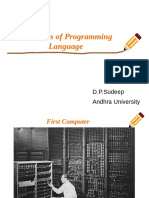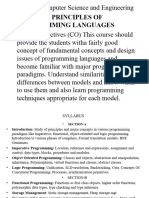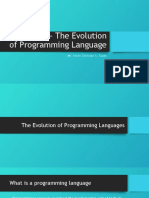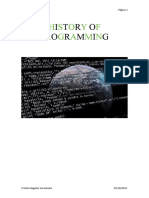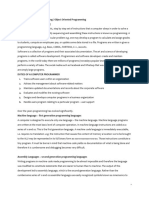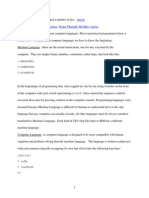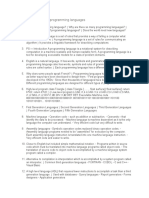0% found this document useful (0 votes)
65 views24 pagesModule 4 Languages
The document discusses the history and concepts of programming languages. It covers topics like reasons for studying programming languages, why there are many languages, what makes a language successful, the development of early languages, and more. Key points are made about language design criteria, popular languages, and influential developers.
Uploaded by
Alex Joseph BaculantaCopyright
© © All Rights Reserved
We take content rights seriously. If you suspect this is your content, claim it here.
Available Formats
Download as PPS, PDF, TXT or read online on Scribd
0% found this document useful (0 votes)
65 views24 pagesModule 4 Languages
The document discusses the history and concepts of programming languages. It covers topics like reasons for studying programming languages, why there are many languages, what makes a language successful, the development of early languages, and more. Key points are made about language design criteria, popular languages, and influential developers.
Uploaded by
Alex Joseph BaculantaCopyright
© © All Rights Reserved
We take content rights seriously. If you suspect this is your content, claim it here.
Available Formats
Download as PPS, PDF, TXT or read online on Scribd
/ 24
